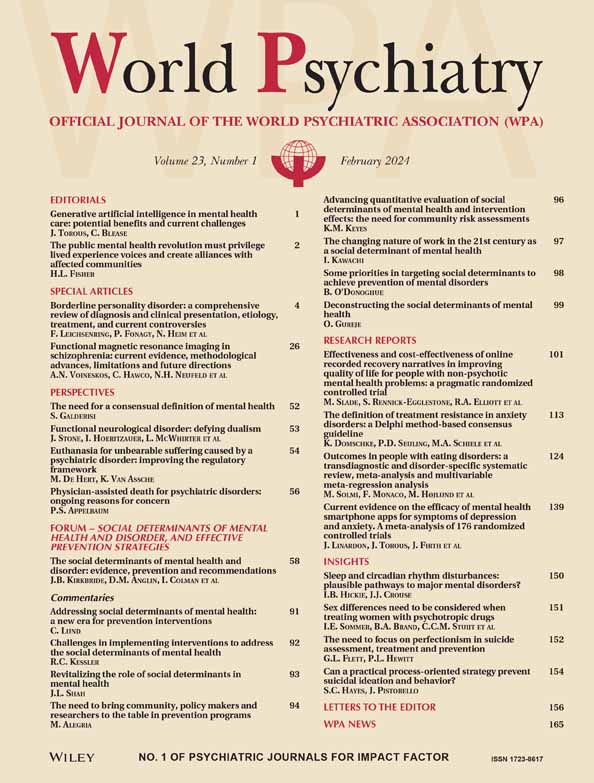创伤后应激障碍:证据和挑战的最新回顾
IF 65.8
1区 医学
Q1 PSYCHIATRY
引用次数: 224
摘要
创伤后应激障碍(PTSD)可以说是暴露于创伤性事件后最常见的精神障碍。自1980年在DSM - III中正式引入以来,有关其原因、维持机制和治疗的知识有了显著增长。然而,尽管人们对这种疾病的了解有所增加,但这种疾病的实际定义仍然存在争议。DSM‐5和ICD‐11对这种疾病的定义不同,反映了该领域的分歧,即创伤后应激障碍的构建是否应该包括创伤后出现的一系列广泛的心理表现,还是应该更具体地关注创伤记忆现象。这种关于澄清PTSD表型的争论限制了识别创伤应激的生物标志物和特定机制的能力。这篇综述提供了PTSD的最新定义,其已知的患病率和危险因素,解释这种疾病的主要模型,以及证据支持的治疗方法。一个主要的结论是,尽管以创伤为中心的认知行为疗法是治疗创伤后应激障碍的最佳方法,但近几十年来它一直停滞不前,只有三分之二的创伤后应激障碍患者对这种干预有充分的反应。此外,大多数PTSD患者无法获得基于证据的治疗,这种情况在低收入和中等收入国家更为严重。确定能够克服这些主要障碍以更好地管理PTSD患者的过程仍然是一个突出的挑战。本文章由计算机程序翻译,如有差异,请以英文原文为准。
Post‐traumatic stress disorder: a state‐of‐the‐art review of evidence and challenges
Post‐traumatic stress disorder (PTSD) is arguably the most common psychiatric disorder to arise after exposure to a traumatic event. Since its formal introduction in the DSM‐III in 1980, knowledge has grown significantly regarding its causes, maintaining mechanisms and treatments. Despite this increased understanding, however, the actual definition of the disorder remains controversial. The DSM‐5 and ICD‐11 define the disorder differently, reflecting disagreements in the field about whether the construct of PTSD should encompass a broad array of psychological manifestations that arise after trauma or should be focused more specifically on trauma memory phenomena. This controversy over clarifying the phenotype of PTSD has limited the capacity to identify biomarkers and specific mechanisms of traumatic stress. This review provides an up‐to‐date outline of the current definitions of PTSD, its known prevalence and risk factors, the main models to explain the disorder, and evidence‐supported treatments. A major conclusion is that, although trauma‐focused cognitive behavior therapy is the best‐validated treatment for PTSD, it has stagnated over recent decades, and only two‐thirds of PTSD patients respond adequately to this intervention. Moreover, most people with PTSD do not access evidence‐based treatment, and this situation is much worse in low‐ and middle‐income countries. Identifying processes that can overcome these major barriers to better management of people with PTSD remains an outstanding challenge.
求助全文
通过发布文献求助,成功后即可免费获取论文全文。
去求助
来源期刊

World Psychiatry
医学-精神病学
自引率
7.40%
发文量
124
期刊介绍:
World Psychiatry is the official journal of the World Psychiatric Association. It is published in three issues per year.
The journal is sent free of charge to psychiatrists whose names and addresses are provided by WPA member societies and sections.
World Psychiatry is also freely accessible on Wiley Online Library and PubMed Central.
The main aim of World Psychiatry is to disseminate information on significant clinical, service, and research developments in the mental health field.
The journal aims to use a language that can be understood by the majority of mental health professionals worldwide.
 求助内容:
求助内容: 应助结果提醒方式:
应助结果提醒方式:


